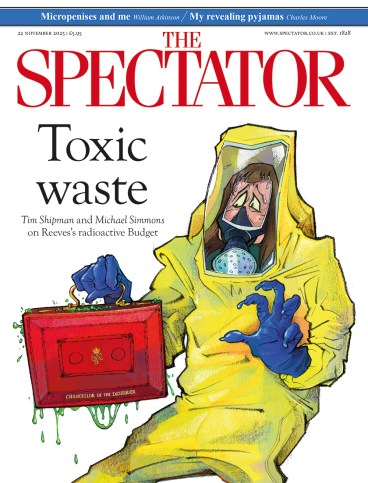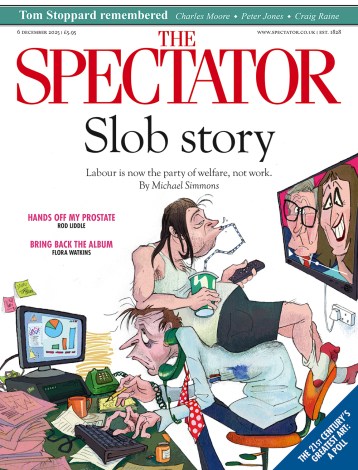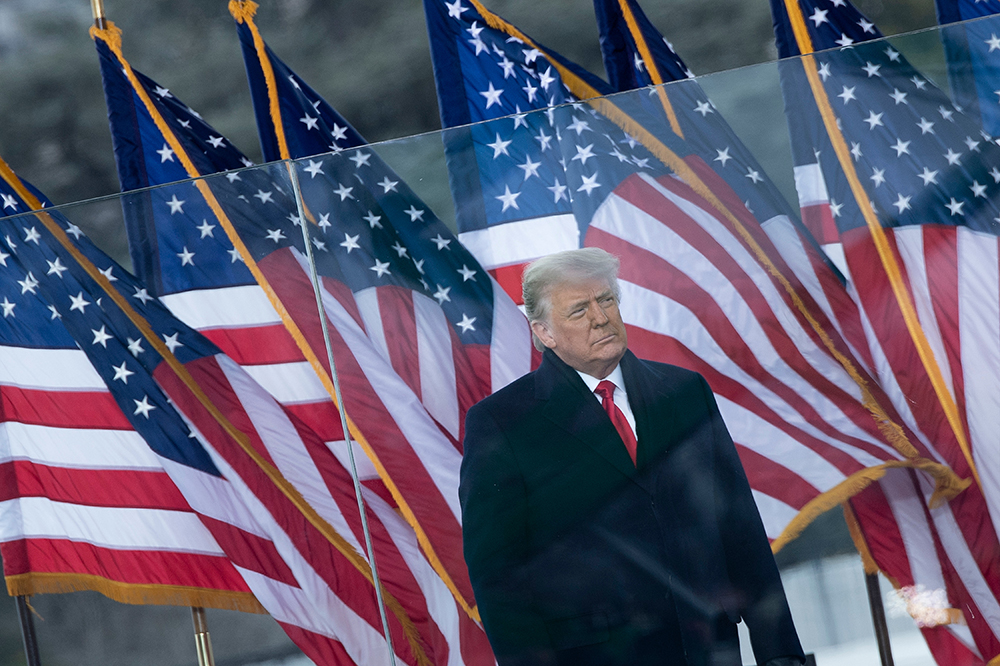
I should begin by making something clear. Splicing together two parts of a speech to give the impression they were one unbroken excerpt is a grave professional error, and would be viewed as such by any broadcaster in the business. The error would be egregious even if there were no suggestion it reinforced the accusation that Donald Trump was inciting riotous behaviour, simply because what viewers thought they witnessed did not occur. There is no excusing what Panorama did to Donald Trump’s 6 January 2021 speech.
Nobody in the senior ranks of the BBC is to blame for not knowing about this at the time; but once it did become known, an immediate and unconditional apology should have been made. Crisply and severely dealt with, the story could have been contained, and it’s for their failure to get fast onto the front foot after a bad mistake that the Corporation has deserved censure. Please, therefore, do not think me an apologist either for misconduct in the making of the programme, or for the BBC’s handling of the scandal.
There is nothing dishonest about arguing that Trump was whipping his supporters into a riotous mood
But about the effect in practice of this splicing, I’m less sure. I’ve read verbatim the entire speech. It’s peppered with the imagery of battle. ‘Fight,’ ‘fighting’ etc occur throughout, and though the combative language may have been used metaphorically, the effect of the repetition is undoubtedly to stiffen the sinews and summon up the blood. Though Trump did once (and only once) tell the crowd they were going ‘to peacefully and patriotically’ protest, the violence of his language all through the speech, and his repeated suggestion that America itself was under attack and his and the crowd’s mission was to ‘save’ the country – along with sentences like ‘We fight like hell! And if you don’t fight like hell you’re not going to have a country any more!’ – can plausibly be interpreted as being calculated (in the legal sense of the word) to inflame the marchers. His later urging of his supporters to ‘remain peaceful’ could equally be interpreted as implicit recognition that he had started a riot.
I do not myself believe that Trump had a plan to provoke violence, but I do suspect he was careless whether he had that effect. I think too that, on the evidence, the accusation that he did know what he was doing would be fair comment on a matter of intense public interest.
That, presumably, was the argument Panorama were rehearsing, and entitled to rehearse. And in doing so by splicing, they fell into a type of self-justification that does not infect the BBC alone but can be encountered everywhere in the media – though notably less in newspapers than the audiovisual media.
Are you familiar with the word ‘truthiness’? The expression (I read) was invented by the American TV satirist Stephen Colbert in The Colbert Report 20 years ago. He was making fun of media professionals who justify the purveying of untruths by explaining that if the purpose of journalism is to reveal a greater truth, then we may deploy a degree of artifice in our methods. If it feels true, if it conveys a truth without being itself literally true, then never mind the absolute truth: it has truthiness.
Despicable? Do not imagine that the pursuit of truth through truthiness always feels outrageously wrong. Let me give you the most anodyne of examples, employed by the closest we have to a television saint: David Attenborough. Sir David once told me that, in a TV sequence showing reindeer migrating across snowfields in Lapland, long-lens cameras were used to zoom in on the herd from a considerable distance. Viewers would be able to see the reindeer close up. No problem with that. But if they were to be seen close up, viewers would expect to hear them close up too. For this, Sir David confided, dry custard powder and a pestle and mortar did the trick wonderfully. The sound, being almost indistinguishable from the real thing, had truthiness.
I find it hard to get indignant about that. But this is a slippery slope. Attenborough had been criticised for taking us, his viewers, into a snow tunnel to see a baby polar bear nurtured by its mother. Well, mother polar bears do nurture baby bears in tunnels in the snow. But in the arctic, how would you get a camera in to capture the scene? So the programme used a constructed maternal scene, viewed through a glass panel in a Dutch zoo, while Attenborough talked about the wild, which viewers thought they were seeing. I feel uncomfortable about this, but I reckon (and TV professionals reckon) most viewers would be fairly relaxed about not being told. The bear nursery we saw had truthiness.

During the last century, in the depth of John Major’s troubles as prime minister, the news media started using a photograph of him, head sunk in his hands. Sir John has told me he was in fact bored, and shielding his eyes from the lights while attempting a limerick on a notepad beneath the desktop. So the image’s implication was false. But it had truthiness.
Down the slippery slope we go, until we reach Trump in that Save America speech. Its effect was incendiary: to inflame his roaring crowd of supporters (‘We love you! We love you!’) they kept chanting. I’d submit that there was nothing dishonest about a documentary arguing that Trump was whipping his supporters into a riotous mood. That is believed by many. And he did shout: ‘We’re gonna walk down to the Capitol… and I’ll be there with you.’ And then at another point in his speech he did shout: ‘And we fight! We fight like hell!’ And if run together, you do get the impression he was at the very least careless about what he was starting. And if that is what the programme–makers were arguing in good faith, then to them the splicing had truthiness. I too find the possibility truthy. But beware of that innocent-looking little y.








Comments